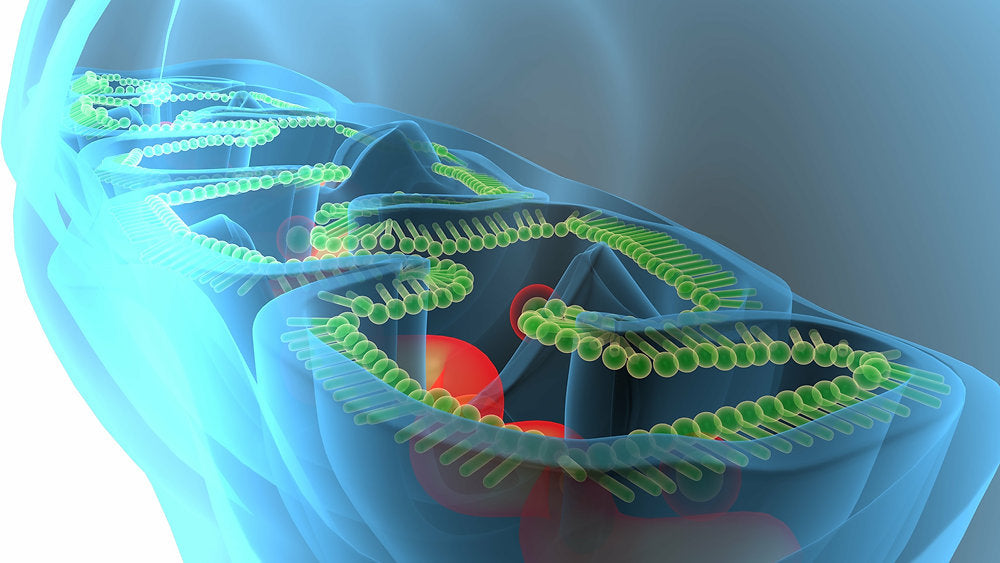
The Power Within: Boosting Mitochondrial Health After 50
As we age, fatigue and slower metabolism often become familiar companions. However, these changes aren’t just due to lifestyle, they’re deeply rooted in how our cells function. At the heart of every cell lies the mitochondrion, often called the “powerhouse of the cell.”
After 50, mitochondrial efficiency begins to decline, impacting energy, cognition, and overall vitality. But here’s the good news, with the right approach, you can protect and even revitalize your mitochondria.
Understanding Mitochondria and Their Role in Aging
Mitochondria generate over 90% of the body’s energy (ATP) required for muscle movement, brain activity, and cell repair. As you age, oxidative stress, inflammation, and reduced cellular repair mechanisms cause mitochondrial dysfunction, a process scientists link to aging itself.
Key impacts of mitochondrial decline after 50:
-
Reduced energy and stamina
-
Slower recovery after exercise
-
Brain fog and memory decline
-
Increased risk of metabolic diseases
Causes of Mitochondrial Decline in Adults Over 50
-
Oxidative Stress: Over time, free radicals damage mitochondrial membranes and DNA.
-
Sedentary Lifestyle: Lack of movement reduces the body’s need to produce new mitochondria.
-
Poor Nutrition: Deficiency in nutrients like CoQ10, B vitamins, and magnesium impairs ATP production.
-
Hormonal Changes: Lower estrogen and testosterone affect cellular metabolism.
-
Toxin Exposure: Pollutants and processed foods increase oxidative load on cells.
How to Improve Mitochondrial Health After 50
1. Adopt Mitochondria-Friendly Nutrition
Certain foods directly support mitochondrial energy production:
-
Healthy Fats: Avocado, olive oil, and fatty fish provide fuel for ATP synthesis.
-
Antioxidant-Rich Foods: Blueberries, turmeric, and spinach help combat oxidative stress.
-
Key Nutrients: Coenzyme Q10 (CoQ10), magnesium, and alpha-lipoic acid are essential cofactors for energy production.
Tip: Consider a diet based on Mediterranean or low-inflammatory principles to support mitochondrial resilience.
2. Engage in Regular, Moderate Exercise
Exercise is one of the most powerful mitochondrial boosters.
-
Aerobic Training (e.g., brisk walking, swimming): Increases mitochondrial density in muscle cells.
-
Strength Training: Enhances glucose metabolism and muscle energy efficiency.
-
Interval Training: Stimulates mitochondrial biogenesis — the creation of new mitochondria.
Rule of thumb: 150 minutes of moderate aerobic activity + 2 days of strength training per week.
3. Prioritize Quality Sleep
During deep sleep, cells repair mitochondrial damage. Poor sleep, on the other hand, triggers oxidative stress.
-
Maintain a consistent sleep schedule.
-
Keep your room dark and cool.
-
Avoid caffeine after 2 PM and screen exposure before bedtime.
Goal: 7–8 hours of uninterrupted sleep nightly.
4. Try Intermittent Fasting or Time-Restricted Eating
Emerging research shows fasting helps clear out damaged mitochondria through mitophagy, a process of cellular renewal.
-
Example: 16:8 fasting (16 hours fasting, 8 hours eating window).
-
Helps improve insulin sensitivity and promotes mitochondrial regeneration.
Note: Always consult your healthcare provider before starting fasting routines.
5. Reduce Exposure to Toxins
Environmental and dietary toxins accelerate mitochondrial wear.
-
Choose organic produce where possible.
-
Filter drinking water.
-
Avoid smoking and limit alcohol intake.
-
Use natural cleaning and skincare products.
The Role of Supplements
If your diet alone can’t provide all necessary nutrients, consider these science-backed supplements (with doctor approval):
-
CoQ10: Supports ATP production and heart health.
-
PQQ (Pyrroloquinoline Quinone): Promotes mitochondrial growth.
-
Omega-3 Fatty Acids: Reduce inflammation and oxidative damage.
-
Resveratrol: A compound found in grapes that activates mitochondrial repair pathways.
Conclusion
Your mitochondria determine how vibrant you feel after 50. By protecting and nourishing these microscopic powerhouses, you can slow aging, boost stamina, sharpen mental clarity, and reclaim your energy.
Mitochondrial health isn’t just about longevity — it’s about living energetically and purposefully, well into your later years.
FAQs
Q1: Can damaged mitochondria be repaired naturally?
Yes, through proper nutrition, exercise, and sleep, cells can repair or replace damaged mitochondria via natural processes like mitophagy.
Q2: How soon can I notice improvements after changing my habits?
Many people report better energy and focus within 4–6 weeks of consistent lifestyle changes.
Q3: Is mitochondrial dysfunction reversible after 50?
While full reversal isn’t always possible, research shows that targeted interventions can significantly restore mitochondrial performance and energy output.
Q4: Should I take CoQ10 if I’m already healthy?
If you’re over 50, CoQ10 levels naturally decline, so supplementation can still support cellular energy and cardiovascular health.

Leave a comment